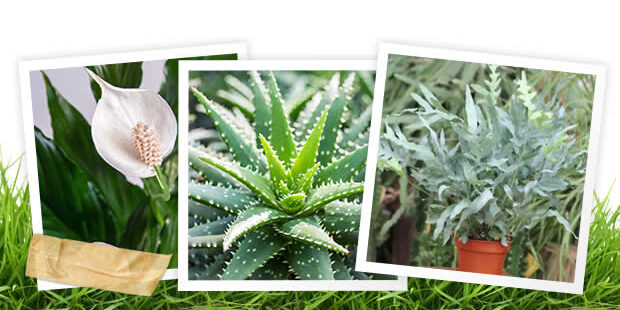As you start the year afresh, why not improve the air quality of your home with these five healthy house-plants?

Just for a second, imagine if your wellbeing could be improved by a plant.
Whist you are undoubtedly familiar with the nutritional and medicinal benefits of plants, there is another subtle, yet important side you might not have encountered: our surroundings have an unseen effect on our health and that certain plants can counteract this.
Back in the late 1980s, NASA, the American space agency, undertook a clean-air study of how plants can benefit astronauts living in space, looking at their long-term missions inside space-stations.
As they tested plants for their ability to efficiently create oxygen, their study revealed something unexpected. When we are indoors, we are exposed to large amounts harmful particles and gases that accumulate in the air around us.
These substances are called Volatile Organic Compounds (VOCs) and are a by-product of modern living. They can be found in household detergents, cleaning products, paints, varnishes, glues, synthetic construction materials, fabrics and even some toilet papers. Over time, the VOCs leach out of these materials and into the surrounding air.
With our natural tendency to keep windows closed at this time and turn up the central heating, we create the perfect environment for these compounds to linger until their concentration becomes detrimental to our health.
During their study, NASA also discovered that those plants that are able to efficiently create oxygen can also absorb these harmful VOCs, processing them into their food or into other non-harmful substances. Test results showed that within a few days of these plants being introduced, levels of air pollution within an enclosed space were significantly reduced.
By using the knowledge discovered by NASA, you too can improve the air quality of your home or office. Studies have shown that the more plants introduced, the better the effect and a good rule of thumb is one large plant per 9m2 or 100ft2.
As with outdoor plants, the rule of the “right plant in the right place” also applies, so here are five plants that can make a difference to your health:
1. Areca Palm (Yellow Butterfly Palm)
This graceful palm loves bright, direct sunlight and is consistently rated among the best houseplants for removing all air toxins. It also acts as an excellent air humidifier for dry, air conditioned offices and is animal safe.
2. Spathiphyllum (Peace Lilly)
Preferring partial shade, this elegant plant is one of the few air purifiers which flowers. It blooms all year round and rids the air of benzene, a carcinogen found in paints, furniture wax and polishes. It also absorbs acetone, which is emitted by electronics, adhesives and certain cleaners.
3. Aloe vera
An easy to grow, sun-loving succulent which thrives in bright conditions. It helps clear the air of formaldehyde and benzene which can be a by-product of chemical based cleaners, paints and more. It’s also well known that the gel inside can heal cuts and burns.
4. Nephrolepis exalta (Boston fern)
First popularised during the Victorian era, the Boston fern is considered one of the most efficient air purifiers. It works especially well in removing formaldehyde and prefers indirect light or darker rooms. It is also animal safe.
5. Phlebodium ‘Blue Star’ (Rabbits foot fern)
As a good all-round air purifier, this blue-green fern has striking foliage that performs well in areas of indirect light. It prefers to be watered from beneath and is animal safe.
Not only do these plants look good, they are super easy to look after. By adding them to the locations where you spend the most time, whether that’s your office or living room, you’ll be purifying the air of unwanted toxins, leading to an overall increase in your wellbeing.
And that’s something worth having, right?


